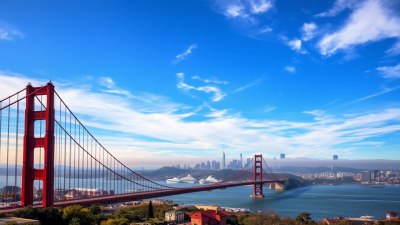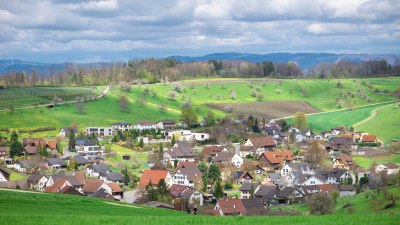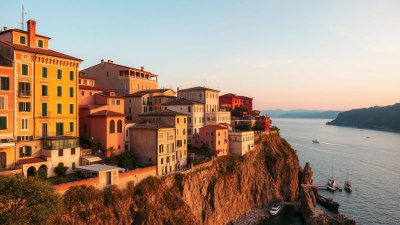Some Skylines Refuse to Be Photographed
Explore the enchanting stories behind unphotographable skylines and their allure.

Image created with Flux Schnell
Skylines have always held a certain allure for travelers, photographers, and urban adventurers. They are often seen as the visual representation of a city’s identity, capturing its soul in a breathtaking silhouette. Yet there are some skylines, shrouded in mystery and enigma, that seem to resist being photographed. These urban horizons tell tales of natural beauty, architectural evolution, and cultural sentiment, weaving a narrative that is as fascinating as it is elusive. In this article, we will delve into the stories and legends surrounding these unphotographed skylines, exploring why they maintain such an enigmatic position in the world of photography.
The Myth of the Unphotographable
The concept of an unphotographable skyline is not merely philosophical; it is tied to tangible factors that render a skyline difficult to capture. There are places where atmospheric conditions, urban design, and the sheer complexity of the landscape conspire to create a scenario that defies the lens. For instance, consider the skyline of San Francisco, often obscured by fog. The city’s Golden Gate Bridge and the surrounding hills can vanish into the mist, leading photographers to frequently miss the iconic view they seek. Similarly, Venice’s skyline is perpetually contested between the delicate balance of architecture and water, with its historical structures appearing and disappearing based on tidal movements.
Atmospheric Conditions
Atmospheric conditions can greatly influence the transparency and clarity needed for breathtaking skyline photography. Weather plays a huge role here. For instance, certain cities are frequently enveloped in haze, smog, or fog, which can create a captivating atmosphere but also hinder visibility. Los Angeles is often criticized for its smoggy skyline; although beautiful, the gray pall over the city can make it difficult for photographers to capture its architectural splendor. Likewise, in Bangkok, pollution and humidity create a fog that blurs the skyline, resulting in photos that fall short of portraying the vibrant energy of the city.
Architectural Challenges
Some skylines are also complicated by their architectural structures, which can be challenging to frame effectively. Take, for instance, the skyline of Tokyo. Modern high-rises intertwine with traditional structures, creating a jigsaw puzzle of shapes that can overwhelm a photographer. It becomes a triumph of personal vision over the chaotic yet beautiful intricacies of the city, making it a task to distill the essence of what the skyline embodies into a single shot.
The Emotional Connection
Beyond the physical barriers to capturing a skyline, there exists an emotional connection to place that influences how we perceive and photograph. Cities like New York, London, and Paris have iconic skylines that are instantly recognizable, yet they carry personal weight for each individual. A photograph of the Empire State Building may evoke feelings of nostalgia, ambition, or adventure, while someone else might only see it as a part of the distracting chaos of Manhattan. This emotional landscape can lead to a desire to capture a skyline that feels authentic and true but is hard to encapsulate.
Nature’s Boundaries
In some cases, natural boundaries create an insurmountable barrier to photography. The skyline of Rio de Janeiro is framed by its natural topography, incorporating mountains and ocean in a breathtaking panorama. However, the very hills that create this picturesque scene can make it deceptively difficult for a photographer to convey the full scope of the skyline. The sight from Sugarloaf Mountain provides an ideal view, but the journey to that vantage point can be an expedition filled with its own obstacles.
Cultural Significance
Some skylines are wrapped in cultural significance that creates an aura of untouchability. For instance, the skyline of Jerusalem is laden with historical and spiritual weight, making it challenging to present it in a way that feels respectful to the myriad beliefs that converge there. The ancient stones of the Old City juxtaposed against modern constructions speak volumes about the complex narrative of faith, conflict, and peace. This added layer of meaning complicates the act of photographing it, as the skyline becomes a sacred space rather than merely a backdrop.
The Evolving Skyline
Skylines are not static; they evolve with time. Cities are continually expanding and changing, driven by urban development and architectural innovations. Cities like Shenzhen in China are emerging rapidly, reinvigorating skylines virtually overnight. This evolution can make it hard for photographers to keep pace with what the skyline truly looks like at any given moment. The texture and appearance of a city can shift in a matter of years, leaving artists to chase an elusive dream that rarely stays still.
Reinventing the Skyline
As urban areas innovate, they may create artificial skylines through lighting, design, and art. Turkmenistan's capital, Ashgabat, often presents a skyline characterized by a combination of unique architectural styles and bright white marble buildings. It is a modern marvel yet is perceived as unphotographable due to its surrealistic feel. The reflections, lightshows, and ever-changing visual aesthetics can render a photo less authentic, often leading photographers to struggle with conveying the true essence of the skyline they are attempting to capture.
Personal Connections to Skylines
Personal connections to skylines also play a role in why certain skylines resist being photographed. For those who have lived in or visited a city extensively, they know the best ways to appreciate it, often looking beyond the camera lens. Sensory experiences like sounds, smells, and interactions shape their understanding of a skyline that can never truly be translated into an image resolved to two dimensions. The best memories associated with these cities may never find their way into a photograph, because the emotional impact cannot be captured.
The Gift of Moments
Sometimes, the moments within which skylines exist are far more vital than the images captured of them. A sunset over the city of Sydney, with the Opera House silhouetted against a golden haunch, speaks to timing, memory, and presence. Photographers may find it difficult to simulate the experience they felt at that moment through a photograph. This is where the argument arises that some skylines, while beautiful, may simply be better experienced than photographed, allowing visitors to connect deeply through the essence of a moment.
A Deeper Reflection
In the end, the quest to photograph skylines brings us face to face with the challenges of representation. Whether it’s through the fog that obscures our vision, the complex architectural landscape, or the emotional weight that each skyline carries, we confront limitations. The dialogue around these limitations urges us to reconsider not only how we perceive skylines but also how we connect to them. It is clear that for every skyline that resists being captured, there are countless stories, experiences, and feelings bottled within their outlines, urging us to explore further and discover whole new dimensions beyond what meets the eye.
Some skylines refuse to be photographed not merely due to technical barriers but also due to the profound narratives, emotions, and cultural significance they embody. These urban horizons might elude the camera lens, yet they capture our imagination and compel us to seek more intimate understanding and connection. The exploration of these unphotographed skylines is not just a pursuit of the perfect picture; it is a journey into the essence of what makes a city come alive. As we continue to grapple with our attempts to frame these elusive silhouettes, we uncover a more nuanced appreciation for the cities they symbolize, realizing that the essence of a skyline often lies beyond our ability to depict it in a still image.











